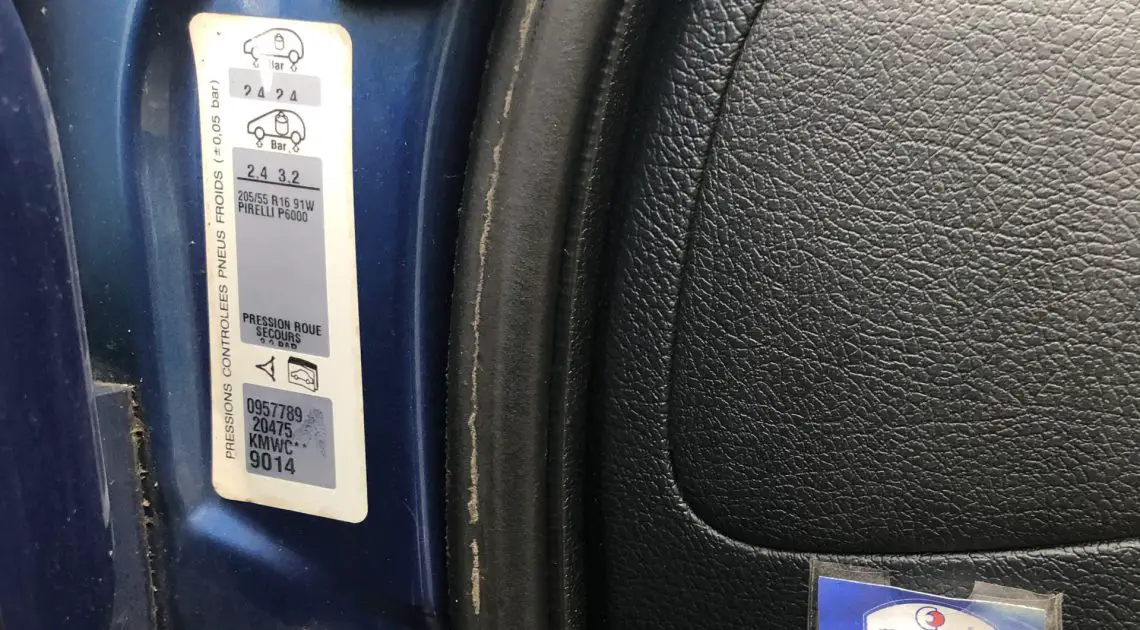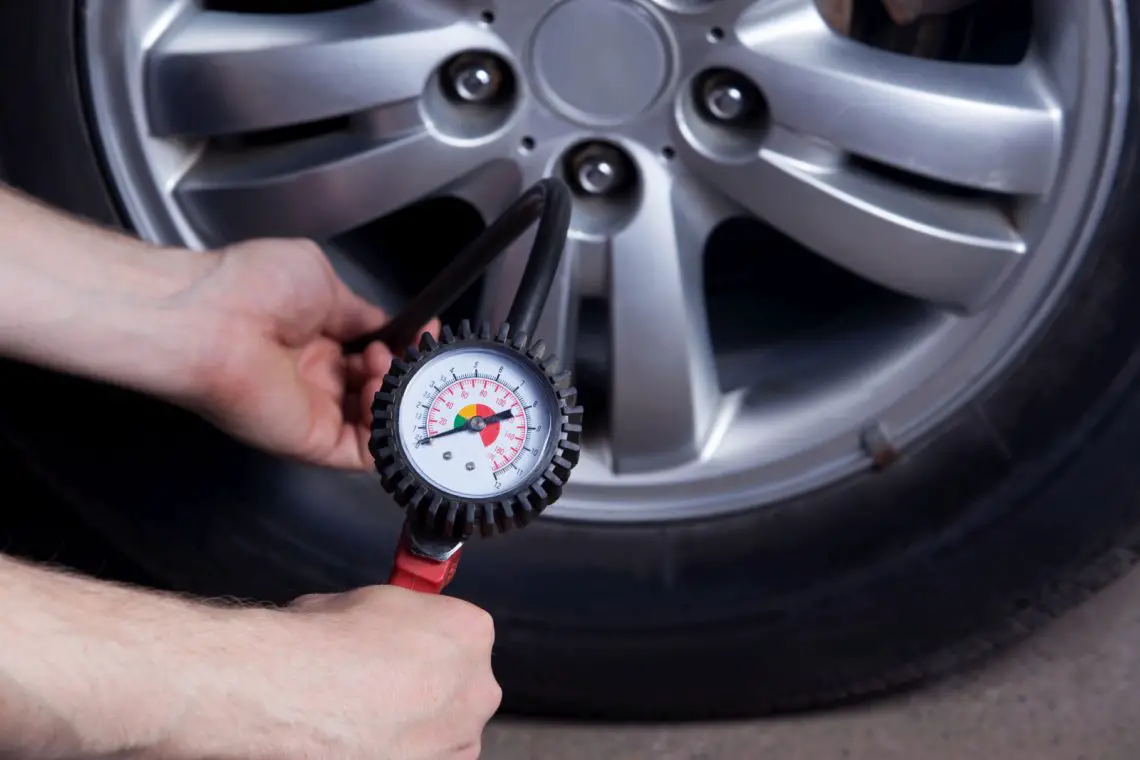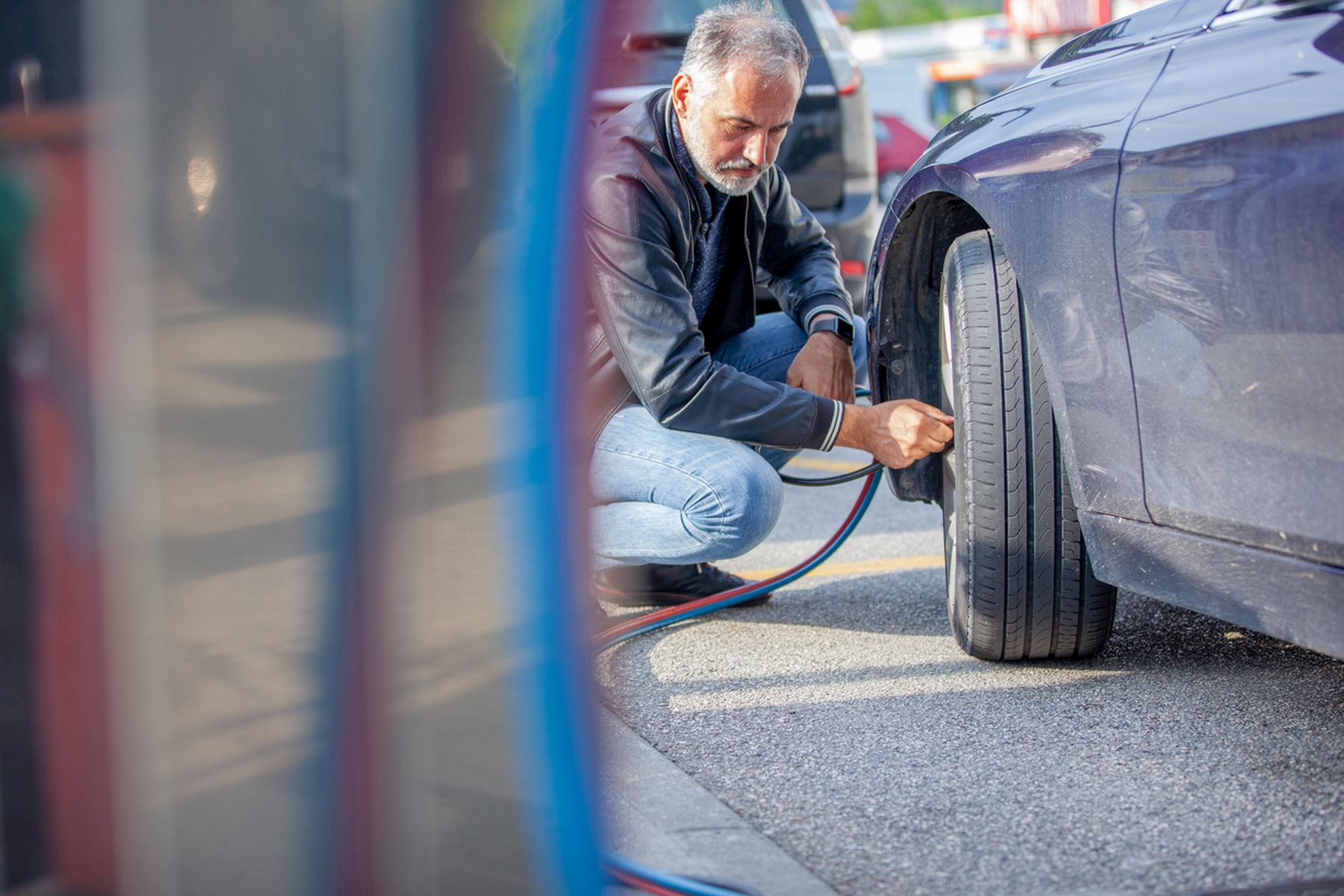Inflating tires? This is how you do it!
To some road users, tires are nothing more than round rubber parts with plenty of air in them. But beware: don’t underestimate the importance of good quality tires at the right pressure. This is essential for the shortest possible braking distance, but also good for favorable fuel consumption, lower CO2 emissions and fine handling. That’s why it’s important to know how to inflate tires.
Looking up tire pressure
Let’s start at the beginning: how do you know the recommended pressure of your tires? You can often find it in the instruction booklet. No instruction book nearby? Then you can also often find the tire pressure on the inside of the fuel cap, on a sticker in the driver’s door pillar, on the back of the sun visor, in the glove box or on the Internet.

Good to know
- Is your car no longer on its original rims or tires? In that case, it’s a good idea to check what tire pressure fits your rim-tire combination.
- Did you drive for at least 15 minutes right before pumping? Then your tires are warm and expand a bit. No problem, but add 0.3 bar to the recommended tire pressure.
- How will you use your car? For standard use, the standard tire pressure applies. Going on vacation and heavily loaded? Or are you traveling with extra occupants? Then check the advice for heavier loads.
- Winter tires often require higher pressures. Don’t blindly take the advice for summer tires, but for winter tires, go for 0.2 bar more.
Where can you inflate your tires?
A simple bicycle pump won’t get you far; you need heavier equipment. Fortunately, you can always go to gas stations, car washes, garages or public parking lots. For this, however, they often charge a small fee (about 1 euro). At gas stations, these pumps often operate with coins, so it doesn’t hurt to keep change in the car.

It doesn’t hurt to buy your own air compressor. It works from the 12V socket in your car and is always at hand.
Inflating tires: how to do it?
- Park your car such that your tires are easily accessible with the air hose.
- Unscrew the valve caps from the tires.
- Select the desired tire pressure.
- Put the pump with the nozzle on the valve and inflate the tire. The pump will beep once the tire is inflated to the desired pressure.
- Are you ready? Then screw the valve caps back on the tires.
Our advice: bring a cloth or cleaning solution. After all, you often get your hands dirty when pumping tires. Like your entire car, tires (and therefore valves) get dirty over time. It’s nice if you can clean your hands before getting back in the car.

Valve Caps
Do you use rubber valve caps? Fine, those always work well. Do you happen to have aftermarket metal valve caps? If so, lubricate it on the inside with petroleum jelly or grease, just to be sure. If you don’t, the metal valve cap can ingrain itself into the metal valve due to heat and/or cold. There is a risk that such a metal cap will be very difficult to get off.

Research
Research shows that many motorists inflate their tires the wrong way. Observation of 92 motorists revealed that the tires still did not contain enough air after inflation. Indeed, 37 percent of motorists accidentally let air out of their tires and thus drove away with softer tires.

